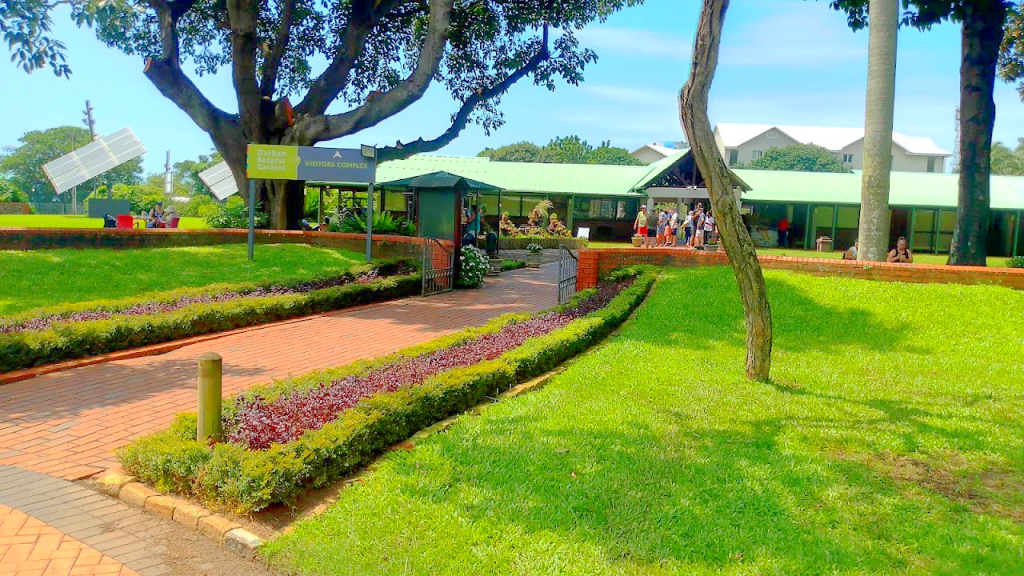
- An panorama of the Durban Botanic Gardens
- How to Get to Durban Botanic Gardens
- Engaging Activities for a Relaxing Day Out
- The kids' playground in Durban Botanic Garden
- Botanic Gardens historical buildings and monuments
- The Durban Botanic Gardens is a haven for bird enthusiasts, with its diverse range of species.
- Planning Your Visit: Tips and Essentials
- Conclusion
An panorama of the Durban Botanic Gardens
Discover the beauty of Durban Botanic Gardens. Find yourself in Durban and wondering where to escape to for some peace and relaxation?
Searching for a serene spot to clear your mind or spend quality time with family in nature? You’re in luck!
This blog post is specifically designed for anyone seeking a tranquil oasis in Durban, whether you’re looking to unwind after a long day of work or simply reconnect with nature.
Keep reading, and you’ll discover all the essential information about the Durban Botanic Garden, the perfect haven to relax and rejuvenate in Durban.
This page contains affiliate links, and I earn a commission if you make a purchase through one of the links at no cost to you. Read the disclaimer for more info. We follow our review guidelines

| Thursday | 7:30 am–5:15 pm |
| Friday | 7:30 am–5:15 pm |
| Saturday | 7:30 am–5:15 pm |
| Sunday | 7:30 am–5:15 pm |
| Monday | 7:30 am–5:15 pm |
| Tuesday | 7:30 am–5:15 pm |
| Wednesday | 7:30 am–5:15 pm |
How to Get to Durban Botanic Gardens
Reaching the Durban Botanic Gardens is an effortless journey, whether you’re a local resident or a visitor to the city.
Conveniently located in the Berea area, near the heart of Durban, the Gardens are accessible via various modes of transportation.
If you choose to drive, the Gardens are conveniently located near the heart of Durban, and there is plenty of visitor parking on the property.
There are several bus routes that serve the region surrounding the Gardens for people who choose public transportation.
Additionally, for tourists or those preferring a more personalized travel option, taxis and ride-sharing services such as Uber are readily available throughout Durban and offer a direct route to the Gardens.
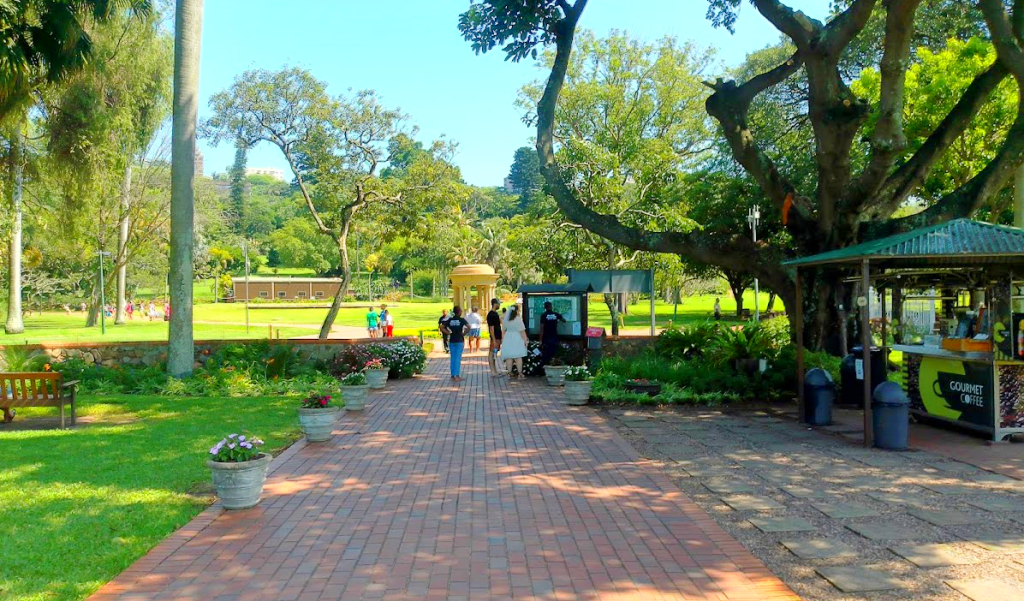
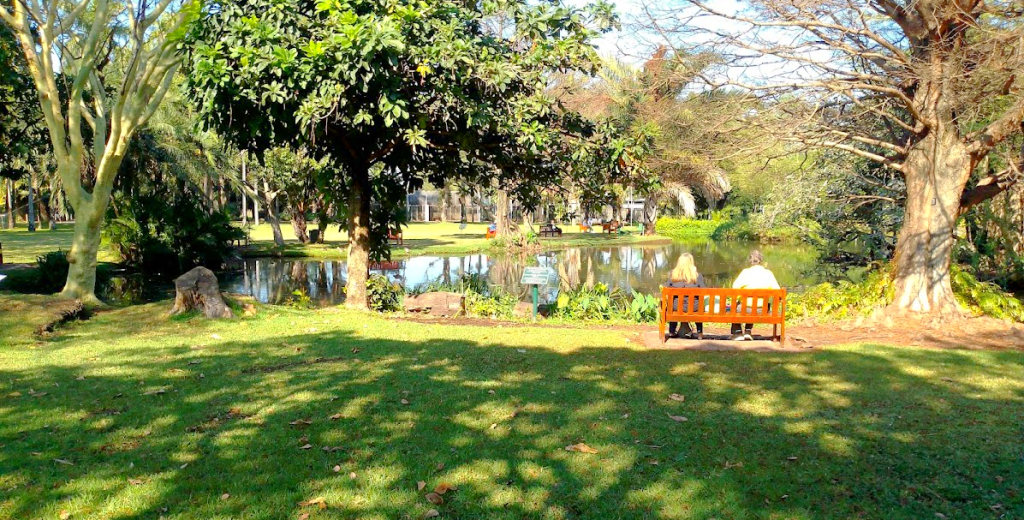
For international or out-of-town visitors, the King Shaka International Airport is the closest airport, from where you can hire a car or use public transport to reach the Gardens if you are familiar with the place. Whichever mode of transportation you choose,
Getting to the Durban Botanic Gardens is straightforward, allowing you to focus on the relaxing and rejuvenating experience that awaits.
In order to ensure safe transportation to the gardens, I advise you to check in with your hotel. as they always are the best options.
Engaging Activities for a Relaxing Day Out
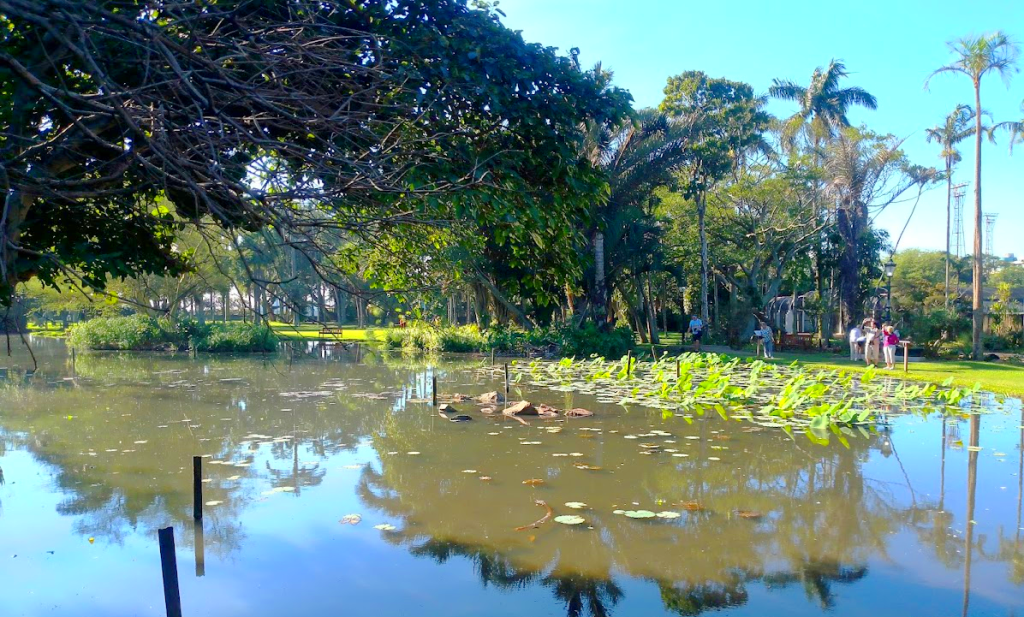
The Botanic Gardens isn’t just a feast for the eyes; it’s also a hub for an array of activities designed to enrich and entertain its visitors.
Those interested in the intricacies of plant life and the gardens’ rich history can participate in the educational guided tours offered. These tours provide insightful narratives on the diverse plant collections and their roles within the ecosystem.
For the creatively inclined, various workshops and events are periodically hosted within the Gardens, offering a hands-on experience in gardening, plant care, and sustainable practices.
Art exhibitions and cultural performances set against the backdrop of the gardens’ stunning landscapes transform a visit into a multifaceted experience.
Families and groups can make the most of the expansive lawns by organizing picnics, where the natural beauty of the surroundings enhances the dining experience.
For individuals seeking a more active engagement with nature, bird-watching opportunities abound, with the gardens being home to a variety of bird species, providing a tranquil yet engaging pursuit.
Additionally, the scenic beauty of the gardens makes it a popular spot for amateur and professional photographers alike, seeking to capture the essence of Durban’s botanical heritage.
In essence, the Durban Botanic Gardens offer more than just a space for relaxation.
It invites visitors to actively engage with nature through a plethora of activities that cater to varied interests, making every visit a unique and enriching experience.
The kids’ playground in Durban Botanic Garden
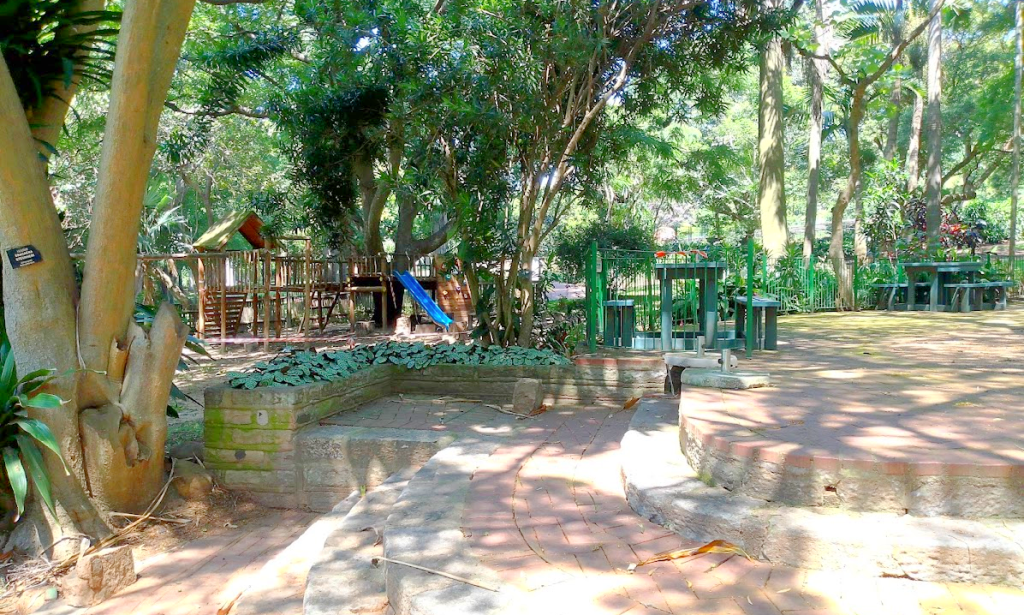
The kids’ playground in Durban Botanic Garden is a wonderful spot for families to spend time together.
While there is a dedicated playground area, the gardens offer a beautiful and safe space for kids to run around and explore
One of the best things about the Durban Botanic Garden is that it’s free to visit, making it an excellent activity for families on a budget.
The gardens are also well-maintained, with plenty of shady spots and walking paths, as you can see.
Botanic Gardens historical buildings and monuments
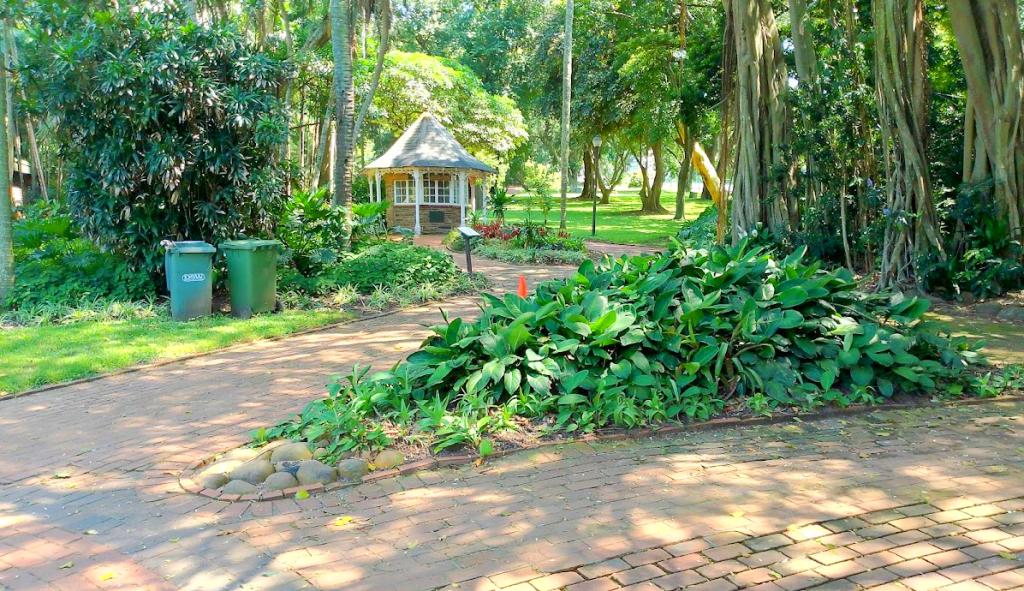
The Durban Botanic Gardens feature several historical buildings and monuments, showcasing the garden’s rich history and cultural significance. Here are some of the notable historical buildings and monuments:
Historical Buildings
- The Curator’s House (1903): A beautiful example of Edwardian architecture, this house was originally the residence of the garden’s curator.
- The John Medley Wood Memorial Hall (1914): A stunning example of Victorian architecture, this hall was built in memory of John Medley Wood, the first curator of the Durban Botanic Gardens.
- The Tea Room (1950s): A charming tea room located in the gardens, offering refreshments and light meals.
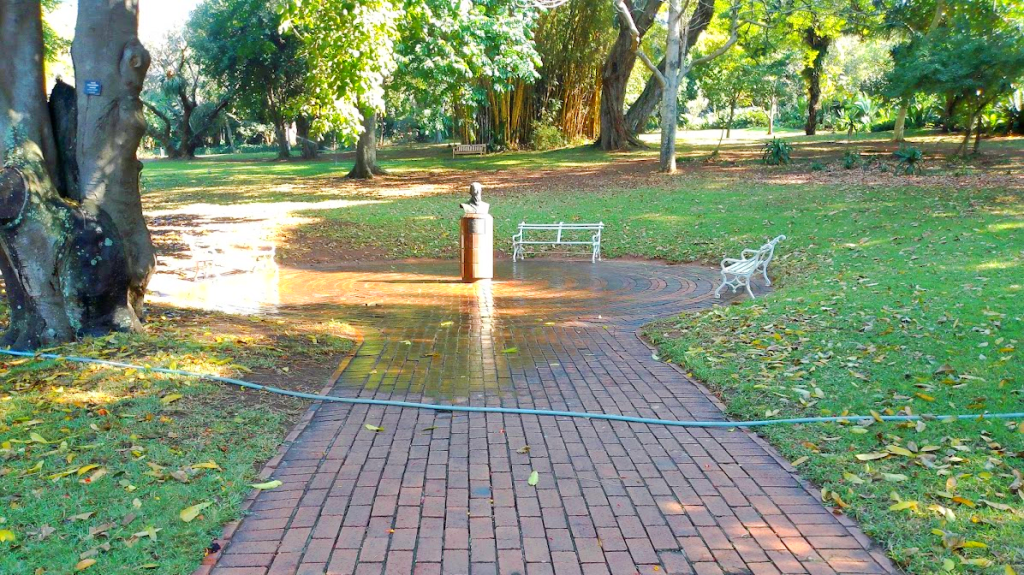
Monuments
- The John Medley Wood Memorial (1914): A monument dedicated to the memory of John Medley Wood, the first curator of the Durban Botanic Gardens.
- The Thomas Charles Johnstone Memorial (1920s): A monument dedicated to the memory of Thomas Charles Johnstone, a former mayor of Durban who played a significant role in the development of the gardens.
- The Queen Victoria Memorial (1901): A monument dedicated to the memory of Queen Victoria, marking her visit to Durban in 1887.
These historical buildings and monuments are an integral part of the Durban Botanic Gardens’ heritage and offer a glimpse into the garden’s rich history.
The Durban Botanic Gardens is a haven for bird enthusiasts, with its diverse range of species.
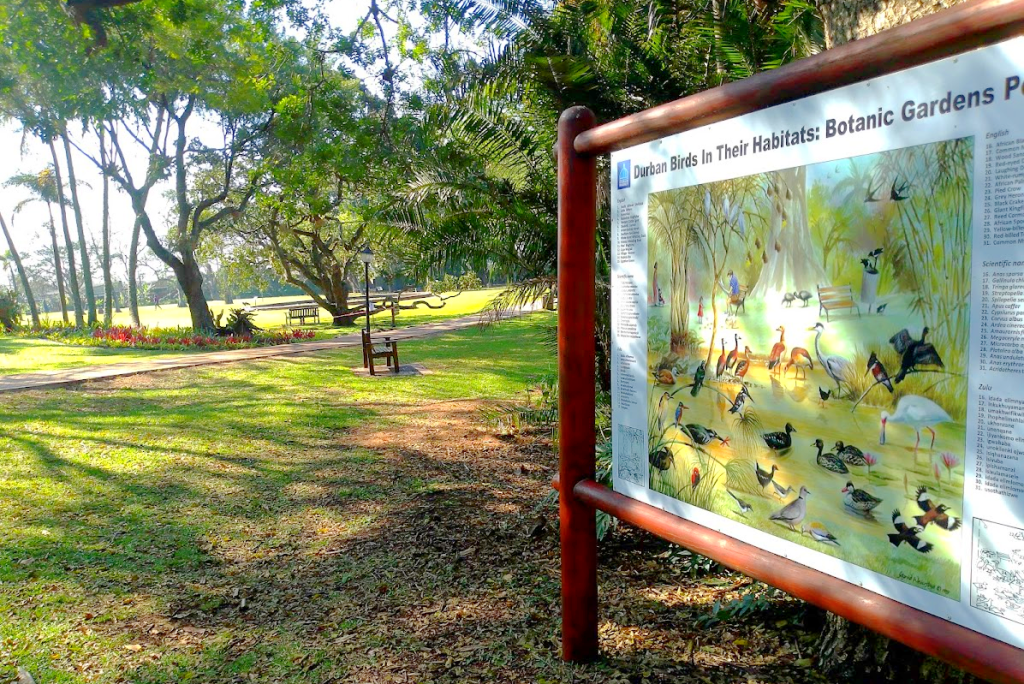
Water Birds
- Egyptian Geese: Commonly seen near the lake, these geese are known for their distinctive calls and brown plumage.
- Grey Herons: Found near the water’s edge, these herons are recognized by their tall stature and grey feathers.
- Pied Kingfishers: Spotted hovering above the water, these kingfishers are known for their striking black and white plumage.
- Brown-hooded Kingfishers: Also seen near the lake, these kingfishers have vibrant brown and blue feathers.
Birds in the Surrounding Trees
- Red-capped Robin-chat: A colorful bird with a distinctive red cap, often seen in the wooded areas.
- African Paradise-flycatchers: Known for their long tails and agile flight, these birds are a delight to watch.
- Southern Red Bishops: With their bright red plumage, these birds are a striking sight, especially during breeding season.
- Village Weavers: Commonly seen building their intricate nests, these birds are known for their social behavior.
- Grosbeak Weavers: A notable sight in the gardens, these birds are recognized by their distinctive beaks and weaving skills.
Planning Your Visit: Tips and Essentials
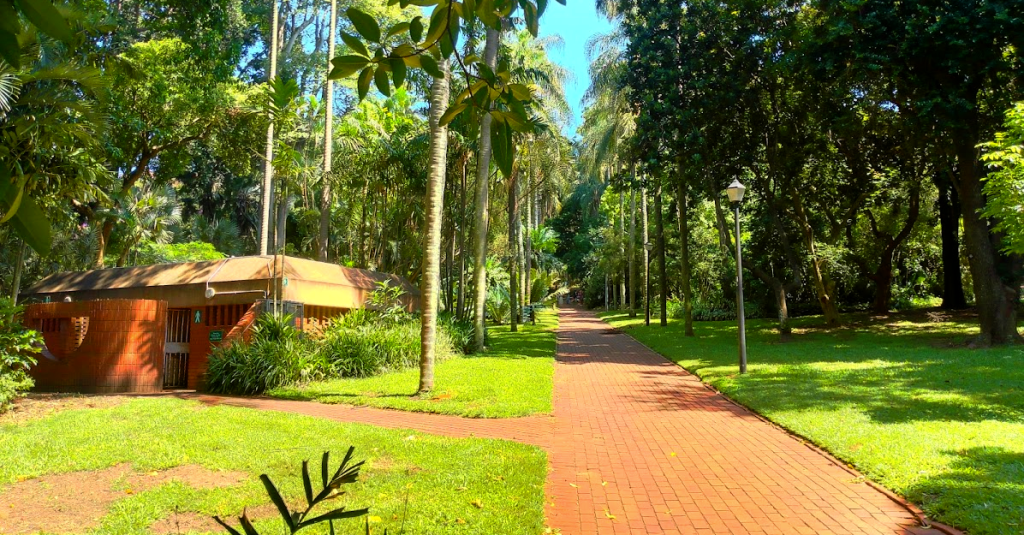
When preparing for a day at the Durban Botanic Gardens, ensuring a smooth and enjoyable experience starts with a bit of foresight.
Opt for attire that will keep you comfortable and mobile throughout your exploration, with sturdy footwear being a must for the varied terrains of the gardens.
Sun protection is key in Durban’s sunny climate, so a broad-brimmed hat and a reliable sunscreen are indispensable items in your daypack.
Given the expanse of the gardens, keeping hydrated is crucial; remember to bring a refillable water bottle, as exploring the natural beauty and diverse plant life can be both exhilarating and thirsty work.
It’s advisable to visit the official website of the Durban Botanic Gardens ahead of your trip to stay informed about the latest opening times, any unique tours that might pique your interest, and upcoming events that could enhance your visit.
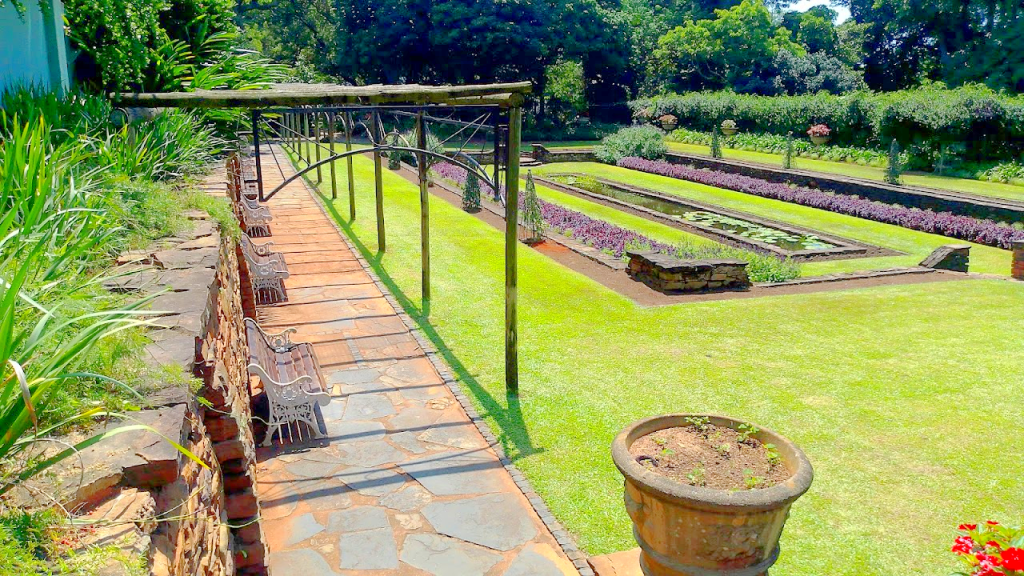
A camera is essential to capture the stunning vistas and unique botanical specimens you’ll encounter.
By being well-prepared, you can fully immerse yourself in the tranquility and beauty of the gardens, making your visit an unforgettable journey through one of Durban’s most picturesque locales.
(03) Things to know before visiting the Durban Botanic Gardens.
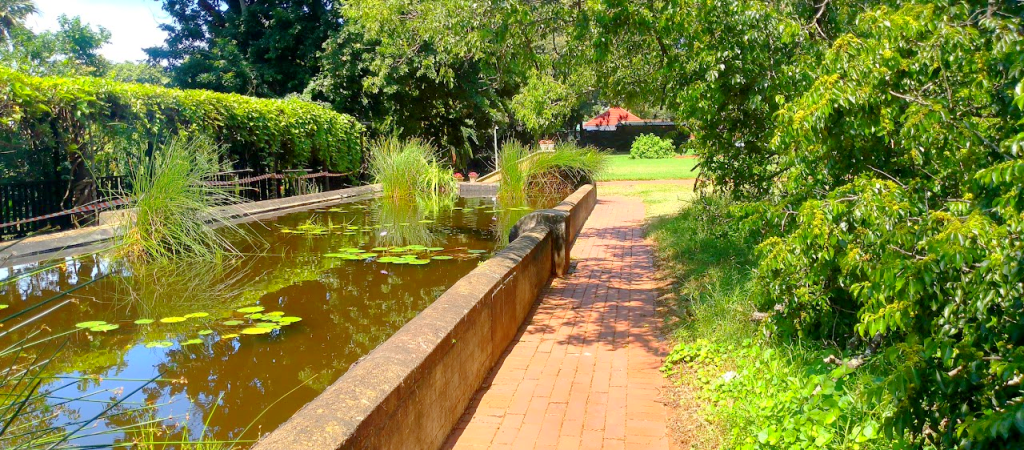
Visiting the Durban Botanic Gardens is not only a journey into tranquility but also an accessible adventure for everyone.
Admission to the Gardens is generally free, making it a budget-friendly destination for both locals and tourists. However, certain special events and exhibitions may have an entry fee.
So it’s advisable to check the Gardens’ official website or contact them directly for the most current information.
In terms of safety, the Durban Botanic Gardens maintains a high standard, with well-marked paths, clear signage, and regular patrols by security staff.
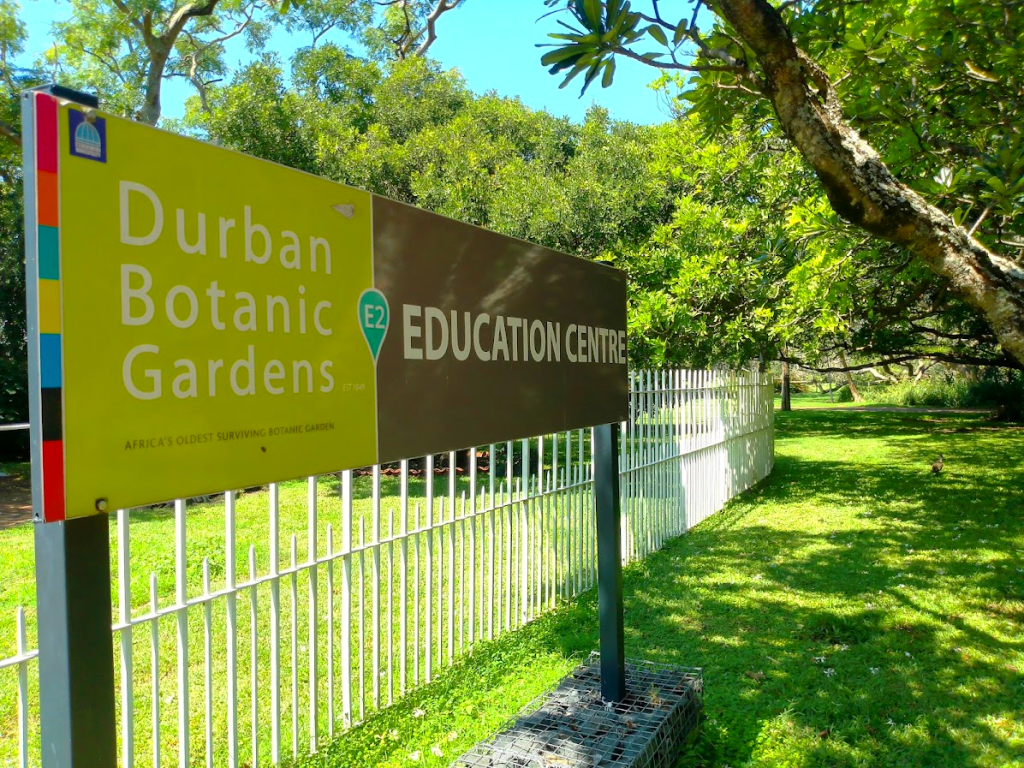
Visitors are encouraged to stay on the designated pathways, respect the natural environment, and follow any guidelines or instructions provided by the garden staff to ensure a safe and enjoyable visit for everyone.


The gardens are well-maintained in all seasons, offering a lush, inviting environment year-round.
Accessibility is a priority, with most areas being wheelchair-friendly, ensuring that everyone can enjoy the beauty and serenity of this historic green space.
Restroom facilities and picnic areas are available, making it convenient for visitors planning to spend several hours exploring the diverse plant life and peaceful retreats within the gardens.
The Durban Botanic Gardens offers numerous serene retreats that invite visitors to pause and soak in the peaceful ambiance.
These tranquil havens are thoughtfully interspersed throughout the garden, allowing for moments of quiet reflection or intimate gatherings amidst nature’s beauty.
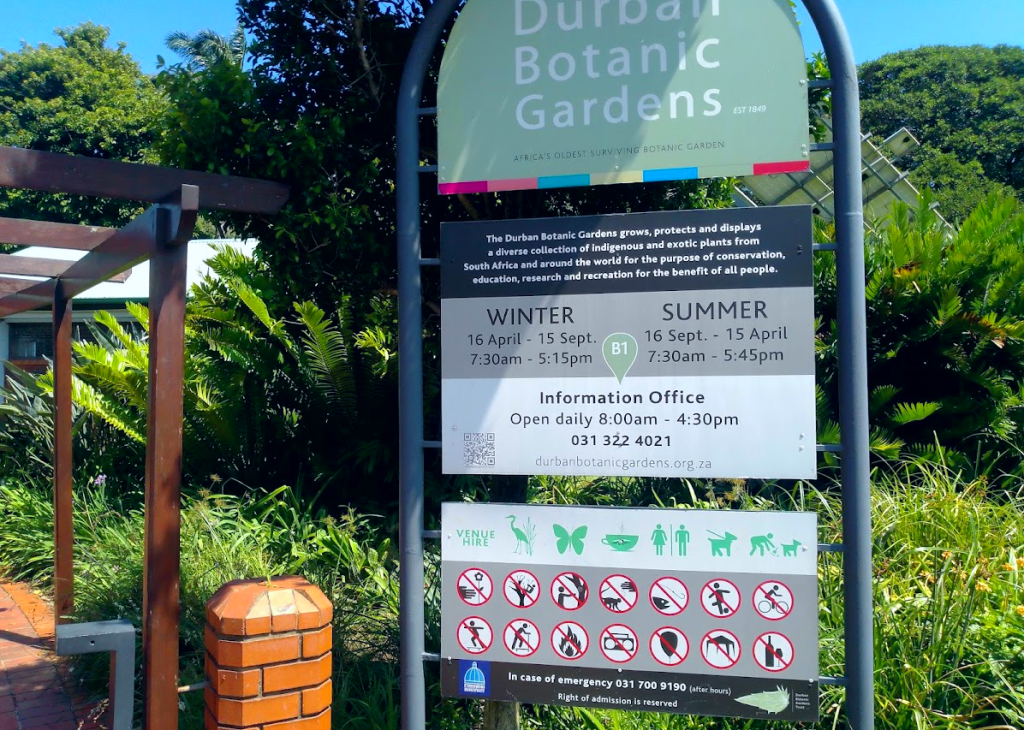
One can find solace beside the gentle murmur of water features that dot the landscape, providing a soothing backdrop to moments of relaxation.
Conclusion
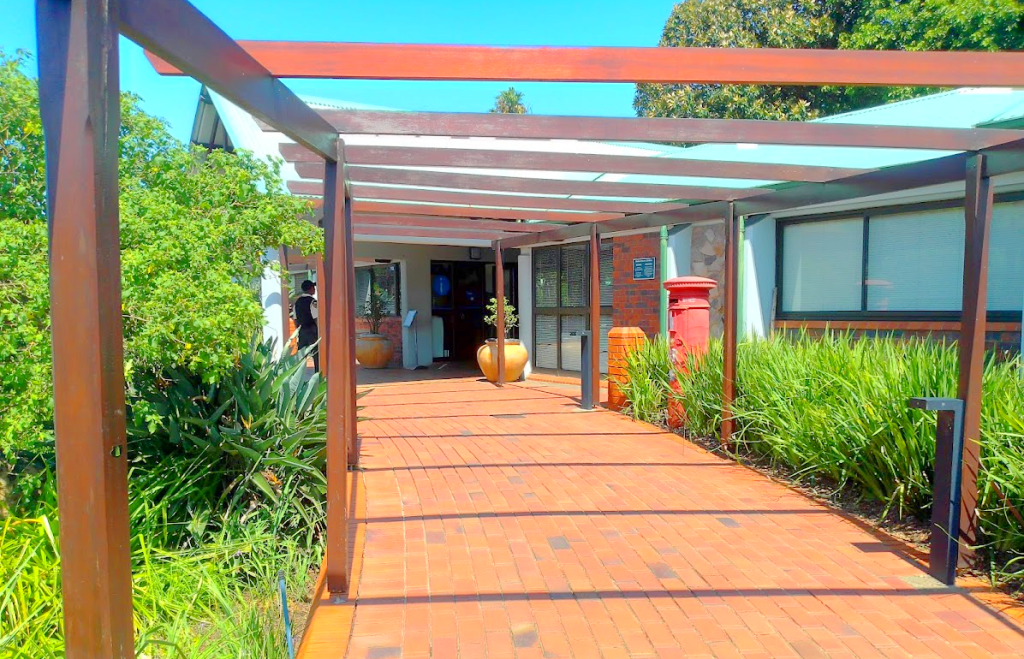
Durban Botanic Gardens offer a unique blend of education, conservation, and recreation, making them perfect destinations for young people.
These gardens provide hands-on experiences with nature, teaching valuable lessons about the environment, sustainability, and the importance of conservation.
Key Takeaways for Youth
- Environmental Awareness: Understanding the role of plants in our ecosystem and the impact of human activities on the environment.
- Conservation Efforts: Learning about the gardens’ initiatives to protect and preserve plant species.
- Recreational Activities: Enjoying the serene atmosphere, participating in workshops, and exploring the gardens.
Final Thoughts
Visiting botanic gardens can spark curiosity and inspire young minds to explore the natural world.
By engaging with these gardens, youth can develop a deeper appreciation for nature and a commitment to protecting it for future generations .
Read About the Best Places to Stay in Durban
Radisson Blu Hotel Umhlanga: Best Hotel in Durban
Blue Waters Hotel Durban: Beachfront Accommodation
Best Accommodations in Umhlanga Durban and Surrounds
Read More About parks in Durban
uShaka Marine World Durban- World-Class Aquarium & Water Park
Mitchell Park Durban & Jameson Park Relaxing Places to Visit
